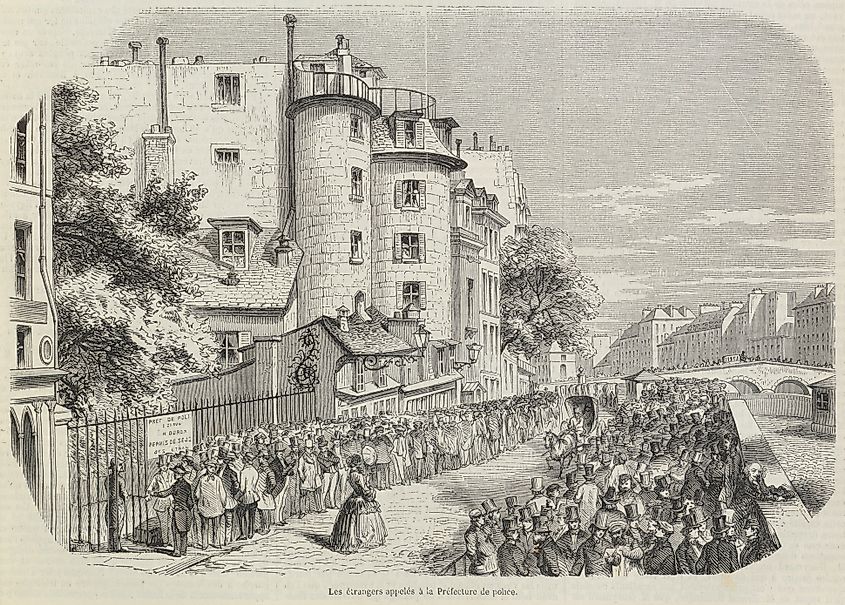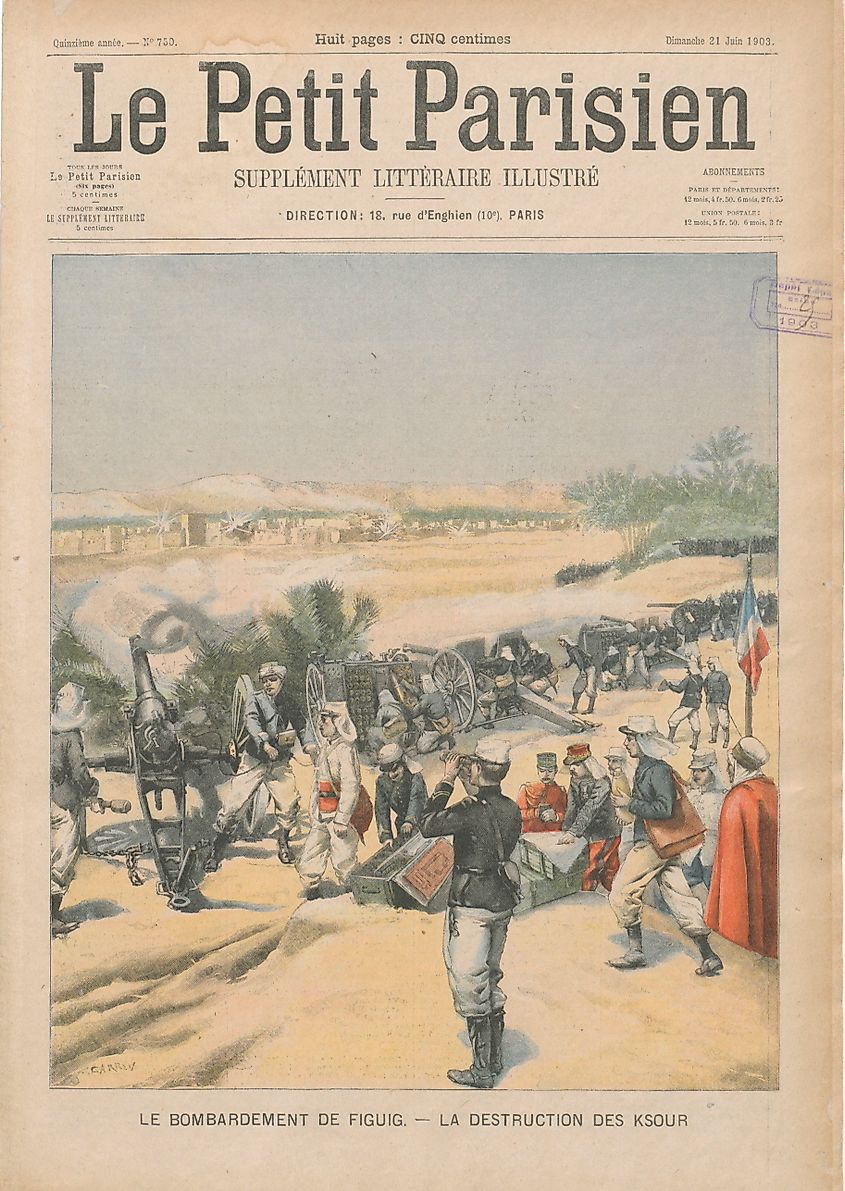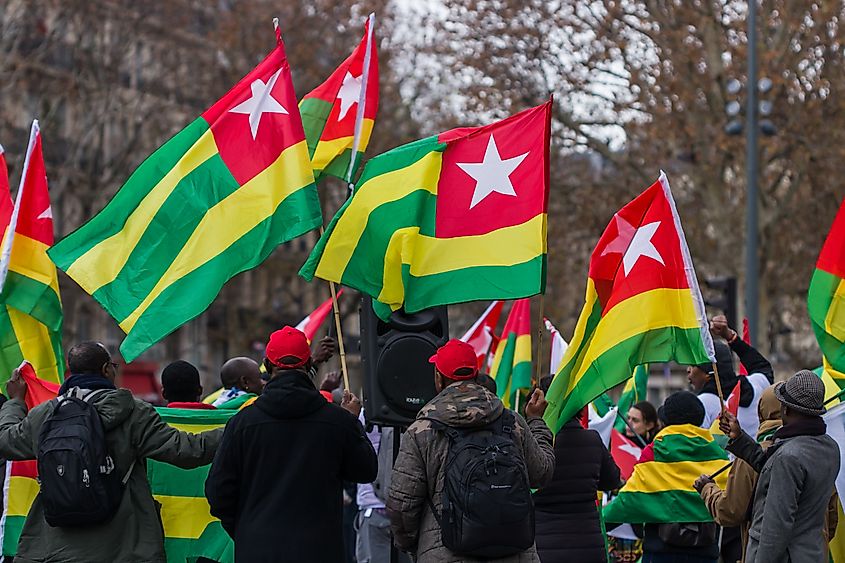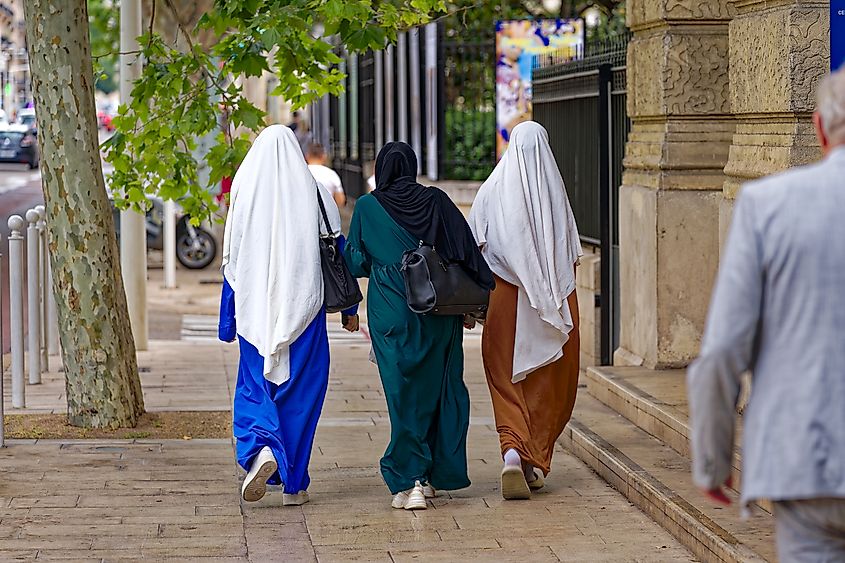
Ethnic Groups and Demographics of France
France’s modern ethnic composition reflects its long history as a major hub for migration and cultural exchange. Descendants from the ancient Celts and Romans, followed by Germanic tribes, such as the Franks and Goths, are just a few of the early ancestors who lived on the land that is now France. In the 19th and 20th centuries, the country’s population and demographics continued to further diversify, receiving a large number of European, African, and Asian immigrants. Today, immigrants continue to play a large role in French society, representing nearly 10% of the overall population.
Demographic Breakdown
An 1872 French law prohibited the country from collecting ethnic data on its census, making it challenging to estimate the percentages of various ethnic groups in the country. However, the country has collected data regarding the percentages of immigrants in the country. 9.7% of the country’s population were immigrants as of 2018. Among these immigrants, 37% had obtained citizenship. In 2018, the immigrant population included 13% from Algeria, 11.9% from Morocco, 9.2% from Portugal, 4.4% from Tunisia, 4.3% from Italy, 3.8% from Turkey, and 3.7% from Spain. In total, 52% of the total immigrant population were women.
Modern French Ethnic Composition

Due to its centric location in Europe, France has been subject to many battles, land disputes, and occupations over the centuries, resulting in a diverse ethnic history. The modern-day ethnic composition of the French population consists of ancestry from Celts, Ligurians, Iberians, Italic, and Roman peoples, as well as from Greeks who resided in the south of France. After the Roman Empire fell, many Germanic people arrived in the region as well, particularly in northern and eastern France. Within these Germanic groups were the Franks, Alamanni, Burgundians, and Goths. Additionally, Berbers and Arabs from North Africa have contributed to France's ethnic composition through later migrations.
During the ninth century, Scandinavian and Viking groups began to occupy a portion of the French region, later integrating with the area’s local population to become the Norman people in the Normandy region. There is also still a small population of Basque peoples, who live in a remote area in the Pyrenees mountains between both France and Spain.
European Migration Waves in the 19th and 20th Centuries

Between 1850 and 1914, around 4.3 million foreigners immigrated to France, while 3 million more arrived during World Wars I and II. During World War I, the large number of French men dying during the war resulted in the government allowing flexible and free immigration from nearby countries, particularly from Spain, Italy, Switzerland, and Belgium. These immigrants quickly assimilated into the French population. A small number also arrived from Central and Eastern European countries. After World War II, France faced a labor shortage due to robust economic expansion. As a result, in the two decades following the war, immigration contributed about 40% to the growth of the French population.
French Decolonization and North African Immigration Waves

North African immigration has its roots in the late 19th and early 20th centuries, as France continued establishing a number of colonies worldwide. People from the French colonies of Morocco, Tunisia, and Algeria immigrated to France during a shortage of industry and agricultural workers in the country, filling a demand for workers. Many North Africans also joined the French Army during both World Wars, which created stronger ties between the countries and contributed to future immigration waves.
Post World War II, there was an even larger immigration boom caused by French decolonization. As France began decolonizing North African countries in the 1950s and 1960s, many of these former colonies faced economic and political instability, leading North Africans, particularly Algerians, to migrate to France in search of better opportunities and security. In the 1970s, French family reunification policies allowed these immigrants to bring their families to the country as well, further increasing the number of North African immigrants. Unrest in the Arab world at the beginning of the 21st century has also led to additional waves of North African immigrants seeking security and economic opportunities in the country.
Subsaharan African Communities

Sub-Saharan African immigration to France has been ongoing for over a century, similar to the migration patterns from North Africa. Early immigrants, particularly from countries like Senegal, came seeking work as domestic laborers and soldiers, especially during and after the World Wars. The majority of Sub-Saharan immigrants, however, began arriving in larger numbers in the 1960s, with significant migration from Francophone countries in Central and West Africa, including Senegal, Ivory Coast, Cameroon, Mali, Guinea, and the Republic of the Congo. A notable number also come from the island countries of Madagascar, Comoros, and Mauritius.
Other Demographic Groups in France

The Arab community is another significant demographic group in France, with many Arabs immigrating during the economic growth of the 1960s and 1970s. Many of these immigrants later brought their families to the country. Additionally, there is a fairly large Asian community in France, primarily consisting of descendants from Turkey, China, and former French colonies in Asia, including Laos, Cambodia, and Vietnam. There are also notable populations of West Asians, South Asians, Koreans, and Japanese.
The European Union estimates there to be around 400,000 Romani people residing in France. These people consist of three subgroups: the Manouches, having familial ties in Germany and Italy, the Gitans, holding ties to Spain, and the Roms, who come from Eastern European regions.
Final Thoughts
France’s rich ethnic composition reflects its complex history and evolving identity. As immigration continues to shape the country, France finds itself reflecting on the importance of embracing both integration and cultural preservation. How will France continue to celebrate its diversity while fostering unity? In many ways, France’s journey reflects a broader global narrative, where diversity is both a source of strength and a challenge in achieving equity within modern societies.











